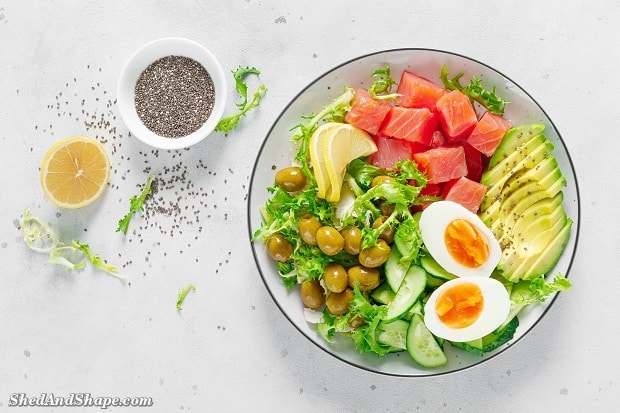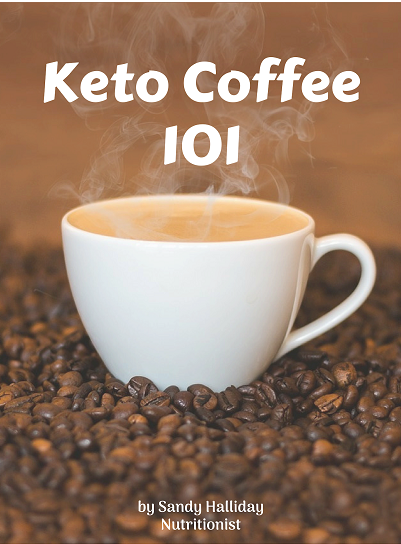The ketoflex diet is an important part of the Bredesen Recode Protocol aimed at improving the overall health and cognitive functioning of the brain. It can even regenerate it!
Dr Dale Bredesen is the brilliant American doctor who first was able to reverse Alzheimer’s in people with an early diagnosis of the disease.
As you no doubt know our diet plays an important role in the health of your brain as much as the health of your body. It’s most important therefore that you should know which are the best foods to eat and what to avoid for our cognitive health.
Dementia and Alzheimer’s are not an inevitable condition in later life as is often stated and are largely preventable. More and more often younger people are getting diagnosed with dementia so it’s never too soon to start thinking about eating and living in a way that can prevent it.
According to Dr. Bredesen, the ketoflex diet can reverse and prevent cognitive decline. Not only that, but the diet is also easier to follow than the regular keto diet since it’s not so highly restrictive. Let’s find out more about this diet and how you can benefit from it.
What is the KetoFlex Diet?
The ketoflex diet is also called the Ketoflex 12/3 Diet. It is called that because you need to fast overnight for 12 hours and you must make sure not to eat at least 3 hours before you sleep.
For instance, if you usually go to sleep at 11 pm, then you should finish your evening meal by 8 pm. This means no bedtime snacks! Fasting for 12 hours means that you can eat again after 8 AM the following day.
The ketoflex diet differs from the regular ketogenic diet in that it is largely plant-based and lower in protein.
Although followers of the diet are not prohibited from eating meat, it’s recommended to treat meat more like a condiment instead of the main course, which is usually what most people do. The rule is to eat about 1 gram of protein for every 1 kg of your weight.
Benefits of the KetoFlex Diet
The ketogenic diet is a great diet to follow since it comes with many health benefits. However, achieving ketosis is difficult for some people who are not used to an extremely low carb diet.
This is why others tend to look for other diet alternatives. If you’re considering switching to the KetoFlex Diet, you might be interested to know the benefits that come with it.
• Promotes Mild Ketosis – if done right, the Ketoflex 12/3 can help to promote mild ketosis. In fact, Dr. Bredesen believes that this is what makes the diet optimal for cognitive function.
When you’re in mild ketosis, your metabolism will switch from burning carbs to burning fats, which is good for the brain.
Related reading: How Ketosis Works for Burning Fat Faster?
• The Diet is Flexible – the ketoflex diet is a flexible version of the keto diet. Because of its flexible nature, it’s easy for both omnivores and vegetarians to follow. It’s generally plant-based while focusing on non-starchy veggies. Consumption of meat is allowed but for only a limited amount.
• Good for the brain – perhaps the biggest benefit of following the KetoFlex Diet is its ability to improve brain health, which is actually the main reason why Dr. Bredesen created this diet plan.
The main components of this lifestyle are fasting, diet, exercise, and good quality of sleep. All these can provide a clean and sustainable fuel for your brain while protecting it against nutrient deficiencies that could lead to dementia.
Basic Guidelines of the KetoFlex Diet
Indeed, the KetoFlex Diet sounds like a good alternative to the standard keto diet. But how do you get started with it? Here are the specific guidelines.
• The majority of the foods in your diet are those that have a Glycemic Index of less than 35. For those who are not aware, the Glycemic Index refers to the ranking of foods from 1 to 100 based on their ability to affect the blood sugar levels. A GI of 55 or less is considered low.
Related reading: Is A Low Carb Diet The Same As Low GI?
• The bulk of your diet should come from vegetables. In fact you should aim to eat 10-15 servings of non-starchy low carb vegetables each day. Always go for organic to avoid pesticide residues and locally grown vegetables where growers avoid the use of chemicals.
You can eat both cooked and uncooked vegetables and try to aim for ones with a variety of colors. You’ve probably heard the expression “eat the rainbow”. This ensures you get a wide range of phytonutrients.
Some of the recommended veggies to include in the Ketoflex 12/3 diet are cauliflower, cabbage, broccoli, radishes, kale, spinach, Bok choy, turnips, Brussels sprouts, arugula, ginger and garlic.
• Instead of fruit juices, go for whole fruits. Again, make sure the fruits have a lower GI. The best ones are lemons, berries, cherries, limes, and grapefruit. Tropical fruits like papayas and mangoes should be avoided since these fruits have a high GI.
• Eat good fats, such as nuts, seeds, avocados, avocado oil, olive oil, coconut oil, walnut oil, macadamia nut oil, and MCT oil. The MCT oil is good if you feel hungry or have cravings. Coconut oil may have to be avoided for people who have the ApoE4 gene.
Soy, corn, canola, safflower, cottonseed, peanut, and palm kernel oil should all be avoided. They are often GMO and processed.
• Protein is restricted to around 30 grams a day. This is the equivalent of about 4 ounces of meat such as a large chicken breast or a medium-sized steak or chop, 4 ounces of salmon or 4-5 eggs.
• You can have some fish in the diet. However, you should go for herring, sardines, anchovies, mackerel, and salmon instead of the larger fish like shark, tuna, or swordfish. Buy fish that’s caught in the wild and not farmed.
• Include probiotics, such as pickles, sauerkraut, and kimchi. You can also have prebiotics in your diet such as taro root, plaintain and banana flour and sweet potato.
• You have to totally avoid simple carbs like bread, sugar, white rice, white potatoes, alcohol, soft drinks, cakes, candies, fast food and all processed foods.
• Lectins and casein should be avoided too. Lectins are proteins that are naturally found in most plants. The ketoflex diet excludes nightshade plants such as tomatoes, and eggplant (aubergine) which are high lectins.
Casein is found in dairy products which are excluded.
• For drinks filtered water, tea such as black, green and oolong, and black coffee are allowed but alcohol is not recommended.
Exercise, Sleep, and Reduce Stress
Aside from following a healthy diet, Dr. Bredesen recommends getting enough exercise and sleep. Stress must also be avoided to achieve optimal brain benefits.
He recommends going for exercise at least 4 to 5 days each week and for 45 to 60 minutes per day. Getting at least 8 hours of sleep each night is also important. The use of sleeping pills is also not recommended in the KetoFlex Diet.
Above all, stress must be avoided at all costs since this is usually the main reason for cognitive decline. There are many things that you can do to minimize stress. You can go for meditation or yoga, get a massage or listen to music.
If you want to know more you can read his excellent book “The End of Alzheimer’s Program: The First Protocol to Enhance Cognition and Reverse Decline at Any Age”
Final Thoughts
If you find the ketogenic diet difficult to follow, the Ketoflex Diet is worth a try. It’s not as restrictive, yet it can offer you some of the health benefits of the keto diet. But the biggest benefit of following the diet is its ability to lower your risk of cognitive impairment.
Remember that brain health is very important since the brain controls our overall body functions. But just like with following any new diet, you must first discuss this with your Functional Medicine doctor or a health practitioner who is experienced in the Ketoflex Diet protocol especially if you have underlying health conditions.










